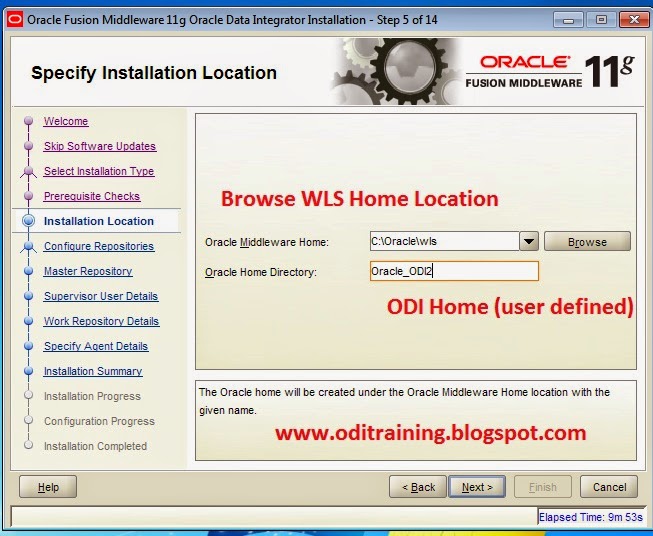Oracle Data Integrator Interview Questions and answers?
1) What is the history of ODI?
2) What are the types of Knowledge Modules?
3) What are the types of data contol?
4) What is Journalization and why we are using in ODI?
5) Tell me step by step to enable Journalization?
6) What is An Interface ?
7) What is temporary Interface( Yellow Interface) ?
8) Tell me some differences between ODI 10g and ODI 11g?
9) Tell what are the ODI tools have u used in your project?
10) What are the Types of repositories in ODI?
11) Can i create more than one Master Repository in ODI?
12) What is a scenario in odi?
13) What is load plan and types of load plans in ODI?
14) What is CKM and when we will use this CKM?
15) What is SKM and when we will use this SKM?
16) What is package and main advantages?
17) Differences between package and loadplans?
18) How to load data from multiple files to single target?
19) How to load data from file to file and what are the KM's required for this requirement?
20) how to pass a variable more than one values?
21) What is an agent and What are the types of agents?
22) What is StandAlone Agent and default port number?
23) What is J2EE Agent and port number?
24) What is the use solutions?
25) What is flexfileds and use of flexfileds in odi?
26) What is CDC and explain complete CDC process flow?
27) What are the types of profiles in ODI?
28) What are the types of Generic profiles types in ODI?
29) Which profile required to access Models in Designer tool?
30) Which profile required to access solution in Designer tool?
31) Which profile required to access ODI Console?
32) What is ODI console?
33) What are types of LOG LEVELS in ODI?
34) What is the use of Markers?
35) What is memo?
36) How to move objects from DEV to QA and QA to PROD Environments?
1) What is the history of ODI?
2) What are the types of Knowledge Modules?
3) What are the types of data contol?
4) What is Journalization and why we are using in ODI?
5) Tell me step by step to enable Journalization?
6) What is An Interface ?
7) What is temporary Interface( Yellow Interface) ?
8) Tell me some differences between ODI 10g and ODI 11g?
9) Tell what are the ODI tools have u used in your project?
10) What are the Types of repositories in ODI?
11) Can i create more than one Master Repository in ODI?
12) What is a scenario in odi?
13) What is load plan and types of load plans in ODI?
14) What is CKM and when we will use this CKM?
15) What is SKM and when we will use this SKM?
16) What is package and main advantages?
17) Differences between package and loadplans?
18) How to load data from multiple files to single target?
19) How to load data from file to file and what are the KM's required for this requirement?
20) how to pass a variable more than one values?
21) What is an agent and What are the types of agents?
22) What is StandAlone Agent and default port number?
23) What is J2EE Agent and port number?
24) What is the use solutions?
25) What is flexfileds and use of flexfileds in odi?
26) What is CDC and explain complete CDC process flow?
27) What are the types of profiles in ODI?
28) What are the types of Generic profiles types in ODI?
29) Which profile required to access Models in Designer tool?
30) Which profile required to access solution in Designer tool?
31) Which profile required to access ODI Console?
32) What is ODI console?
33) What are types of LOG LEVELS in ODI?
34) What is the use of Markers?
35) What is memo?
36) How to move objects from DEV to QA and QA to PROD Environments?






















































































